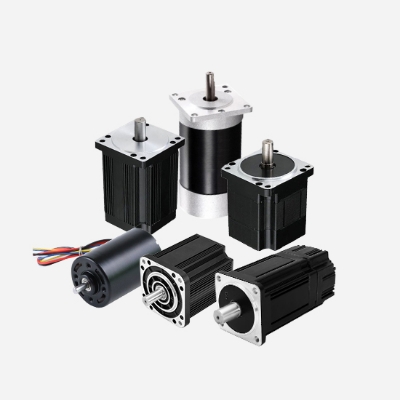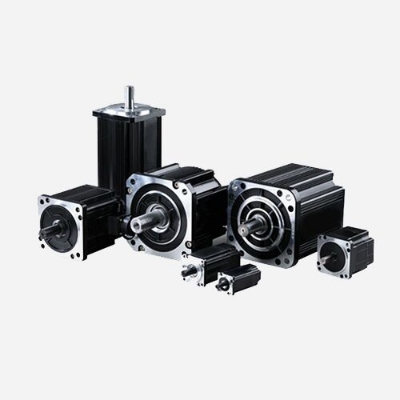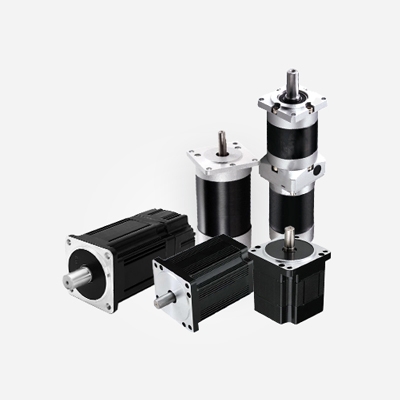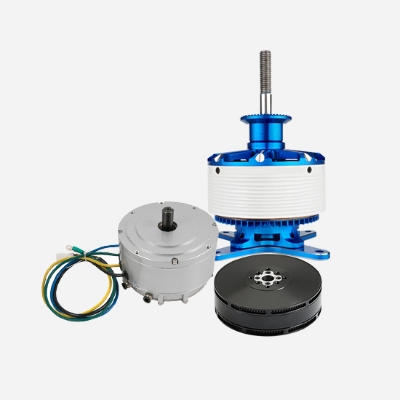As a power source for all kinds of machinery, motors are used in a wide range of applications, from heavy industry to small toys. In daily use, it is necessary to adjust the speed of the forward and reverse rotation of the motor. The following describes the use of potentiometers to control the speed of brushless DC motors.
The stator of a brushless motor is the part that generates the rotating magnetic field and can support the rotor to rotate. It mainly consists of a silicon steel sheet, enameled wire, bearing, bracket, etc.; the rotor can support rotor rotation under the action of the stator rotating magnetic field, and the parts mainly consist of the rotor shaft, magnet, bracket, etc. In addition, the number of pole pairs formed by the stator and rotor will also affect the speed and torque of the motor.
The power supply of the DC brushless motor is connected to the brushless motor through the controller so that the DC brushless motor runs in one direction. Looking at the direction of the motor shaft extension, the motor shaft rotates clockwise is called forward rotation, and counterclockwise rotation is called reverse rotation. The following is explain how to wire a controller to reverse a BLDC motor.
The wiring principle of the general brushless DC motor is basically similar. Here we take a 24V brushless motor as an example to show you how to connect the motor to the controller and make the motor turn.
To test 24V BLDC motor requires a controller, 24V DC power supply start switch, a push button switch & a toggle switch, including power wires and hall wires, as well as a resistive accelerator pedal. All of these constitute the basic parts to operate a BLDC motor.
A brushless motor is mainly used to generate driving torque as a power source for appliances or various machinery, and its main function is to use mechanical energy to convert it into electrical energy. Under the action of torque of mechanical equipment installed with a brushless motor, the object will change in position or angle, etc. Therefore, it can be calculated according to the formula of the definition of Aki torque. That is, torque (T) = power (P) * 9.55 / number of revolutions (N), or mutual conversion factor can also look like this: T * number of revolutions / 9.55 = power
The brushless DC motor is developed on the basis of the brushed DC motor. It has step-less speed regulation, a wide speed regulation range, strong overload capacity, good linearity, long life, small size, lightweight and large output. Brushless motors are widely used in industrial equipment, instrumentation, household appliances, robots, medical equipment, etc. Since the brushless motor does not have brushes for automatic commutation, it needs to use an electronic commutator for commutation, which can be achieved by purchasing a matching brushless DC motor controller.
A brushless DC motor consists of a motor body and a driver and is a typical mechatronic product. Because the BLDC motor works in a self-controlled manner, it does not add a starting winding to the rotor like a synchronous motor with a heavy load under variable frequency speed regulation, nor does it vibrate and lose steps when the load changes suddenly.
Before connecting the DC brushless motor to the gearbox, the keyway of the motor shaft should be perpendicular to the fastening bolt. To ensure even force, turn any diagonal mounting bolts first, but do not tighten them, then turn the other two diagonal mounting bolts and tighten the four mounting bolts one by one. Tighten the tensioning bolts. All mounting bolts need to be secured according to the mounting torque data shown and checked with a torque wrench
About brushless motor power calculation, there is a formula to follow, whether it is brushless motor or other types of motors, all motors, must be involved in the parameters of power, speed, torque, with a reducer, then you also need to consider the reduction ratio. From the motor power, torque, and speed of these parameters, you can calculate the required parameters according to the formula, such as power * 9.8NM / speed = torque, and vice versa, torque * speed / 9.8 = motor power.
In BLDC motors, the phase windings are distributed in a trapezoidal fashion to generate a trapezoidal BEMF waveform. The commutation technique generally used is trapezoidal or called block commutation of only two phases at any given point in time. Another method of motor commutation is called sinusoidal commutation, where all three phases will be performed at any given point in time. PMSM motors are also interchangeably referred to as BLDC motors with windings that are distributed in a sinusoidal manner that lends itself to this sinusoidal type of commutation. The torque produced by a PMSM motor is smooth compared to a BLDC motor, which produces more fluctuations in torque. However, PMSM motors produce less peak torque than BLDC motors.




